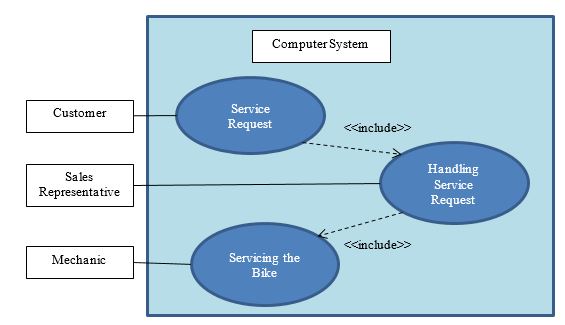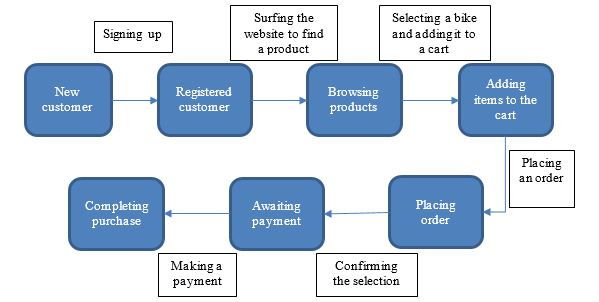Campus Bikes is a popular and successful bicycle shop owned by Mark Turner. The owner wants to improve the business operations and service delivery. That is why Mark wants to install a suitable and effective computer system to deal with all business functions. My task is to assist Mark with this important process. I will rely on an object-oriented approach to identify objects with their attributes and methods, determine use cases and actions, create a use case diagram, and develop a state transition diagram.
Three specific objects are identified, and each of them has a few attributes and methods in a new computer system.
- Customers represent the first object, and these are among the most significant stakeholders for the business. Their possible attributes include name, contact information, and purchase history. This object can use multiple methods, such as placing an order, requesting service, or making a payment.
- Bikes are the second object that represents the leading products of the business. Their attributes are represented by brand, model, price, and availability. As for possible methods, examples refer to adding to a cart, calculating the price, and updating stock.
- The third object refers to a full-time mechanic who repairs and services bicycles. This object can be defined by the attributes of name and certification level. Servicing a bike and maintaining inventory are the possible methods that can be applied to the mechanic.
The following element of the computer system relates to specific use cases and their actors. The first variant refers to placing an order, with a customer and a sales representative being actors. The second use case includes bike assembling, which occurs after all repairing is done; the actors are the mechanic and a service helper. Handling returns and refunds represent the final use case under analysis. In this case, the customer and sales representative (in case of a return) and the bookkeeper (in case of a refund) are the actors.
The visual below represents a use case diagram explaining how service requests are handled.

The following visual depicts a state transition diagram describing customer states.
